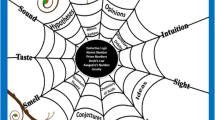Abstract
I conducted a personal survey, completely informal, asking groups of doctors during training courses to give me in writing, in a strictly anonymous fashion, a brief operative description of diagnosis. The majority were unfocused and confusing regarding the process and nobody mentioned any probability-based criteria. Objectively, diagnosis is a difficult concept and rich with implications: this is the heart of medical activity and few doctors are able to define it correctly. There exist well-founded reasons to ask ourselves what diagnosis means and how many are the implications and the many environments in which the concept might be declined. We have to accept that even at the end of a complete and exhaustive diagnostic workup, it might not be possible to reach a diagnosis and it is much wiser to admit it rather than giving the patient a label that will abandon them only with extreme difficulty. Whether or not we like it, we behave, even unconsciously, like convinced Bayesians and we should be aware of the fact that the predictive value of your test will vary on how high or low is the presence of the illness. With a very low prevalence, even a very sensitive test might produce an unacceptably high number of false positives. Naturally, it is not necessary to supply a definition of diagnosis to be a good doctor. What counts is that we are aware that the diagnostic process is based on probability and not certainty, we are prone to biases, diagnostic tests can have false positives and false negatives, and having reached a certain threshold of probability and trust in diagnosis we should decide, with our patients, what to do or not do.


Similar content being viewed by others
References
Federspil G (2004) Logica clinica. McGraw-Hill
Powers RD, Guertler AT (2005) Abdominal pain in the ED: stability and change over 20 years. Am J Emerg Med 13(3):301
Mutius E, Drazen M (2012) A patient with asthma seeks medical advice in 1828, 1928, and 2012. N Engl J Med 366:827–834
Moloney ME, Konrad T, Zimmer CR (2011) The medicalization of sleeplessness: a public health concern. Am J Public Health 101:1429–1433
Vickers AJ, Basch E, Kattan MW (2008) Against diagnosis. Ann Intern Med 149:200–203
Smetana GW (2011) Rethinking “abnormal” blood pressure: what is the value? J Gen Intern Med 26(7):678–680
Pagliaro L, Bobbio M, Colli A (2011) In: La diagnosi in medicina. (Diagnosis in medicine) Raffaello Cortina Editore
Mcgrayne SB (2011) The theory that would not die: how Bayes’ rule cracked the enigma code, hunted down Russian submarines, and emerged triumphant from two centuries of controversy. Yale University Press
Sackett DL, Straus S (1998) On some clinically useful measures of the accuracy of diagnostic tests [editorial]. ACP J Club 129:A17–A19
Worster A, Innes G, Abu-Laban RB (2002) Diagnostic testing: an emergency medicine perspective. CJEM 4(5):348–354
Lauer MS (2011) Pseudodisease, the next great epidemic in coronary atherosclerosis? Arch Intern Med 171(14):1268–1269
Fagan TJ (1975) Nomogram for Bayes theorem [Letter]. N Engl J Med 293:257
Medow MA, Lucey CR (2011) A qualitative approach to Bayes’ theorem. Evid Based Med 16(6):163–167
Attia JR, Nair BR, David W, Sibbritt DW, Ewald BD, Paget NS, Wellard RF, Patterson L, Heller RF (2004) Generating pre-test probabilities: a neglected area in clinical decision making. Med J Aust 180:449–454
Rhodes KV (2004) Resuscitating the physician-patient relationship: Emergency Department Communication in an Academic Medical Center. Ann Emerg Med 44:262–267
McGee S (2012) Evidence-Based Physical Diagnosis. Elsevier
Rubulotta FM, Ramsay G, Parker MM et al (2009) An international survey: public awareness and perception of sepsis. Crit Care Med 37:167–170
Poeze M, Ramsay G, Gerlach H et al (2004) An International Sepsis Survey: a study of doctors’ knowledge and perception about sepsis. Crit Care 8:R409–R413
Crosskerry P, Nimmo GR (2011) Better clinical decision making and reducing diagnostic error. J R Coll Physicians Edim 41:155–162
Crosskerry P (2012) Perspectives on diagnostic failure and patient safety. Healthcare Quarterly 15(Special Issue):50–56
Conflict of interest
None.
Author information
Authors and Affiliations
Corresponding author
Rights and permissions
About this article
Cite this article
Sbrojavacca, R. “What, diagnosis?” Between Bayes and biases. Intern Emerg Med 7 (Suppl 3), 173–179 (2012). https://doi.org/10.1007/s11739-012-0823-8
Published:
Issue Date:
DOI: https://doi.org/10.1007/s11739-012-0823-8




